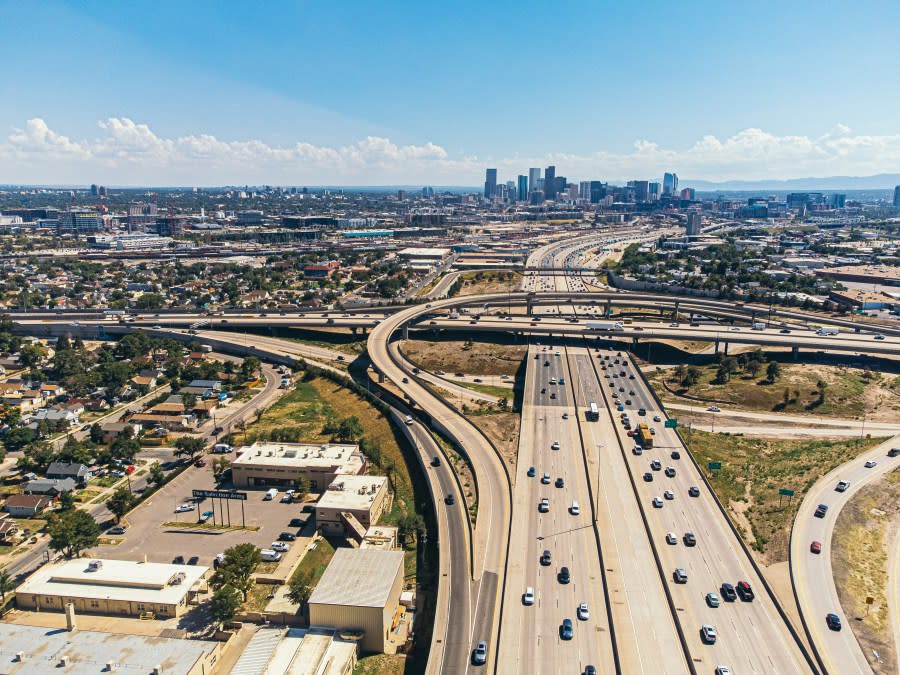Why the interchange of I-70, I-25 in Denver is called the ‘mousetrap’
DENVER (KDVR) — Neither are among the most complained-about roads in the Denver metro area, but the area where Interstate 70 and Interstate 25 convene is talked about enough among Colorado drivers to have its own name.
The area has a history of major incidents, according to the Colorado Department of Transportation.
Why are streets in downtown Denver crooked? History can explain
It’s the busiest interchange in Colorado, serving hundreds of thousands of travelers daily, according to CDOT. Today, Coloradans often refer to it as the “mousetrap.”
How the ‘mousetrap’ got its name
It started with an interchange that was built in 1951 at 46th Avenue and what would become I-25, according to CDOT.
Crews were constructing I-70 in Colorado throughout the 1960s and 1970s. The first part of I-70 to be built in Denver was along the 46th Avenue route from Jackson Street to the junction of I-25. This stretch was constructed from 1961 to 1964, and modifying the interchange was part of that project.
Knowing these Denver street name patterns may save you from getting lost
In the late 1960s, an airborne traffic reporter called the interchange a “mousetrap,” describing it as a maze that could trap a mouse, according to CDOT.
“It was so called because it supposedly looked like a mousetrap from the air, and because it was infamous for trapping vehicles within its network of sharply curving ramps,” the CDOT website states.
The name stuck and incidents later on would solidify the mousetrap name.
The mousetrap torpedo incident
Early in the morning on Aug. 1, 1984, a truckload of torpedoes was dumped around the mousetrap.
A Navy truck was traveling on I-25 when the driver exited the interstate, apparently driving at too high of a speed, according to CDOT.
Why Market Street turns into Walnut Street in downtown Denver
The truck crashed and the load ended up dumped under various mousetrap structures. According to a Los Angeles Times archive article, the truck was carrying six Navy torpedoes and slid over 100 feet down the exit ramp.
The major interchange was closed for several miles in all directions, for several hours including the rush hour period, according to CDOT.
According to the L.A. Times article, it was several hours before the torpedoes were removed. No one was injured, but dozens of people were evacuated.
CDOT said the incident garnered worldwide publicity and prompted a realization that the mousetrap could not handle the estimated 300,000 vehicles that traveled through each day.
History of the Eisenhower Tunnel: How Colorado built a road under a mountain
After that, CDOT made plans to reconstruct the mousetrap as well as the part of I-25 that had opened to traffic in 1951.
In 1987, the 44th Avenue bridge over I-25 was replaced, and I-25 was widened. Crews began construction on new I-70 bridges over I-25 in 1989, and the project was completed with a ribbon cutting at the end of 1991.
Copyright 2024 Nexstar Media, Inc. All rights reserved. This material may not be published, broadcast, rewritten, or redistributed.
For the latest news, weather, sports, and streaming video, head to FOX31 Denver.


